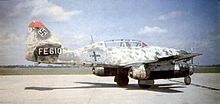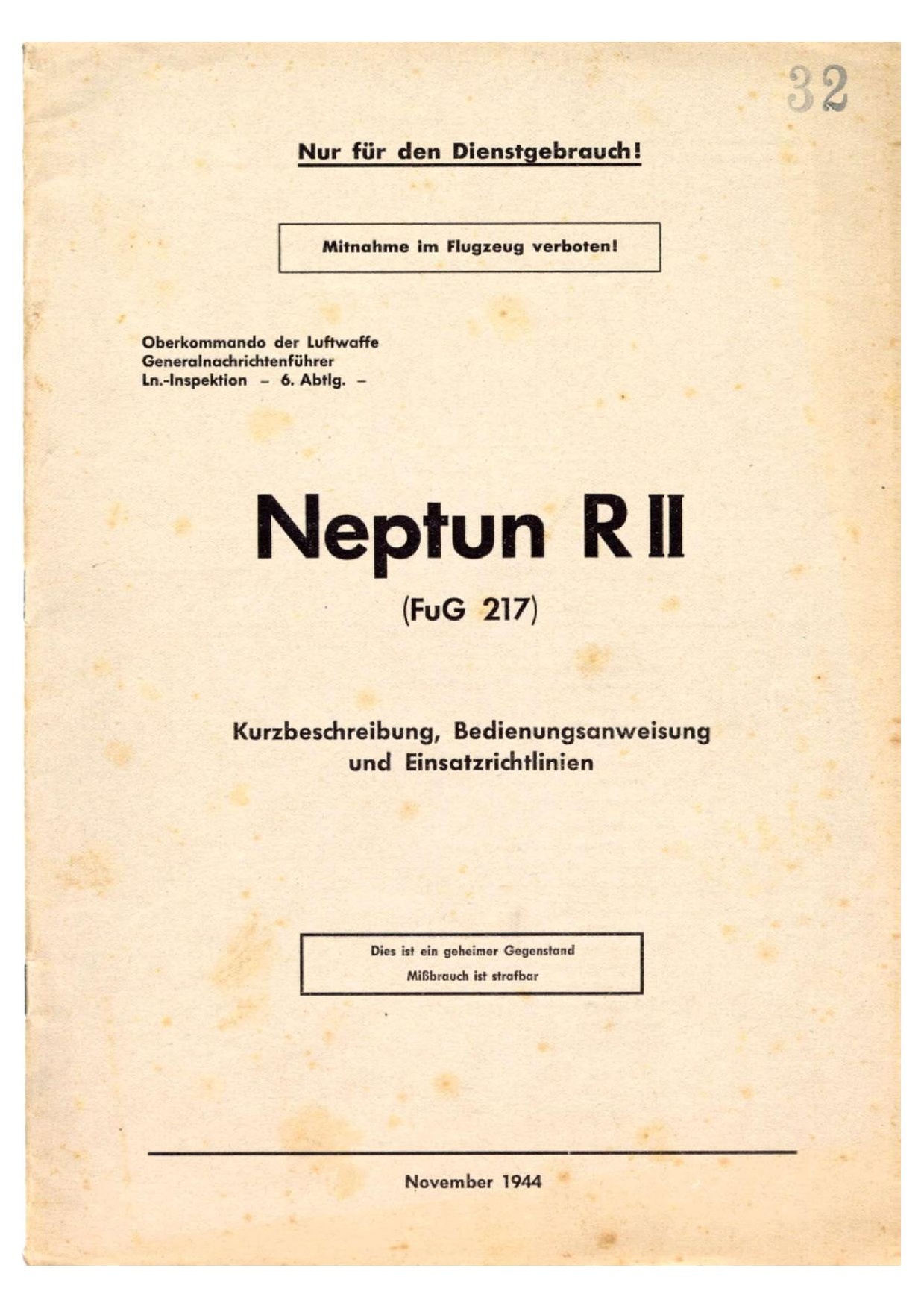Neptun (radar)


Neptun was the code name of a series of radar devices developed by Germany in World War II and used as active targeting devices in several types of aircraft. They were usually combined with a so-called "backwards warning device", indicated by the addition of the letters "V/R". Working in the metre range, Neptun was meant as a stop-gap solution until scheduled centimetre-band devices became available (for instance the FuG 240/E Berlin AI radar)[1].
FuG 216: Experimental series to plan the further development
Installed in Fw 190 A-6/R11 and Bf 109 G-6 [2]
The aircraft were used by NJGr 10 until March 1944, after which some machines of 6./JG 300 (Kommando Plöger) were equipped.[3]
- Manufacturer: Flugfunkforschungsinstitut Oberpfaffenhofen (FFO, German for "airborne radio research institute")
- R1 version (backwards warning device)
- Frequency: 182MHz
- Power: 1.0kW
- Transmiting and reveiving antennas each consist of four rods, mounted under and above the wings, respectively
- Single display device with distance readout
- V version (for single engined night fighters)
- Frequency: 125MHz
- Power: 1.2kW
- Range: 500 to 3,500m
- Antennas in the form of spikes or (Fw 190) as "antlers" on right and left wings
FuG 217: Installed mainly in Ju 88 G-6, only a few Bf 110 G-4, He 219 or Me 262 received the Neptun. It could be combined with the additional Elfe device to automatically measure the target distance and fire the guns at a pre-set range. [4]
- Manufacturer: FFO
- R2 version (backward warning device)
- J2 version (for single-engined night fighters)
- Ausführung V/R (combined night fighter and backward warning device for two-engined fighters)
- Two switchable frequencies: 158 and 187MHz
- Search angle: 120°
- Range: 400 to 4,000m
- Spike or "antler" antennas
FuG 218: mass-produced
- Manufacturer: Siemens / FFO
- R3 version (backward warning device)
- J3 version (for single-engined night-fighters)
- V/R version (combined night fighter and backward warning device for two-engined fighters)
- Six switchable frequencies: 158 to 187MHz
- Search angle: 120°
- Range: 120 to 5,000m
- Weight: 50kg
- R3 and J3 with spike antennas and V/R with "antler" antennas.
- G/R version (combined night fighter and backward warning device for two-engined fighters)
- Only one single device built, replacing the 2kW transmitter with a 30kW transmitter. Range increased to up to 10km. This device was intended for the Dornier Do 335. "Antler" antennas.
Literature
- (1) TME 11-219 Directory of German Radar Equipment
- Gebhard Aders: Geschichte der Deutschen Nachtjagd, Motorbuch publishing corporation, 1977, ISBN 3-87943-509-X

See also
Sources
- ^ Aders, p. 269
- ^ http://www.choiquehobbies.com.ar/revista/notas/nj/nje.htm
- ^ Aders, S. 210
- ^ Aders, S. 268

